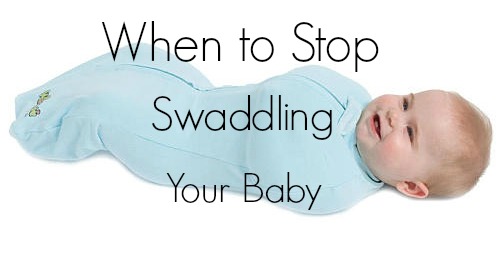Setting Your Baby Free – Making Swaddling Safe for Your Baby and Knowing When to Stop
Swaddling is an age-old practice that’s introduced to your baby the moment they are born. Proven to be an effective soothing technique for your baby, swaddling mimics the feeling of being snuggled up in their mother’s womb by wrapping them in a blanket that is both comforting and calming. Swaddling can help your baby relax when they’re feeling cranky, irritable, colicky, or overstimulated.
Not only does swaddling comfort your baby, but it also promotes better sleep with less awakenings during the night. This is beneficial for baby, and parents, because they’re able to receive the proper rest they need to grow and develop. However, swaddling can make it harder for your baby to wake-up after their long night of slumber. When a baby is swaddled, they experience a decrease in arousal. While this allows for them to sleep for longer periods of time, it also hinders their ability to wake-up with the energy needed to eat and play.
There are several benefits to swaddling your baby, such as: provides comfort, soothes and calms baby when they’re fussy, and promotes better sleep. Yet, there are still risk factors you need to take into consideration when swaddling your baby.
Risk Factors to Avoid
- SIDS – To decrease the chance of SIDS (Sudden Infant Death Syndrome), always place your swaddled baby on their back to sleep and monitor them closely. Once your baby is strong enough to roll themselves from back to tummy, they should no longer be swaddled while sleeping. Babies need to have their arms and hands free when they roll so that they can lift and adjust their head position, preventing suffocation. There is an option to wrap your baby in a swaddle blanket that leaves their arms free, giving them the ability to have better control while rolling, but it’s still recommended that you leave them completely uncovered to reduce the risk of SIDS.
- Overheating – Always be cautious with how many layers you dress your baby in. During the summertime, just wearing a diaper underneath is sufficient enough. Meanwhile, in the winter, your baby will want the extra warmth of a onesie underneath. Also, be sure to use a swaddle blanket made out of breathable fabric, such as cotton, to allow air circulation and keep your baby from overheating. Be on the lookout for excessive sweating, flushed cheeks, rapid breathing, damp hair, or heat rash.
- Hip Dysplasia – Being wrapped in a tight-fitting blanket for long periods of time can impair the development of your baby’s hips and cause hip dysplasia. This occurs when a baby’s legs are wrapped tightly in a straightened position, restricting them from being able to bend upward or outward, causing an abnormal formation of the hip joint so that the top of the thigh bone is no longer secured in its socket. You can prevent this from happening by making sure there is enough space at the base of the blanket when you swaddle your baby so that they have more freedom to move their legs.
When to Stop Swaddling Baby

Knowing both the advantages and disadvantages of swaddling your baby, there is still a question that remains: when should you stop swaddling your baby? There are a few different indicators that you’ll need to be on the lookout for:
- Rolling. As stated above, it’s important that you stop swaddling your baby once they are strong enough to roll themselves over (which can be as early as four months of age). This will reduce the risk of suffocation and SIDS.
- Development. Another indicator that your baby should no longer be swaddled is if they are showing signs of hip dysplasia or other developmental issues in their hips and legs.
- Resistance. Your baby can let you know when it’s time to ditch the swaddle blanket. If they become overly fussy or try to break free after you swaddle them, that’s their way of signaling that they no longer enjoy being confined in a blanket.
Overall, swaddling is a wonderful tool that helps ease your newborn’s transition from mother’s womb to the real world and I have recommended some best swaddle blankets for you. Your baby will discover a sense of comfort and calmness when they’re snuggled up in the softness of a swaddle blanket. There is no true timeline of when to stop swaddling baby. The key is to make sure you’re paying attention to your baby’s cues and creating the safest environment for them.

1 thought on “Knowing When to Stop Swaddling Baby”